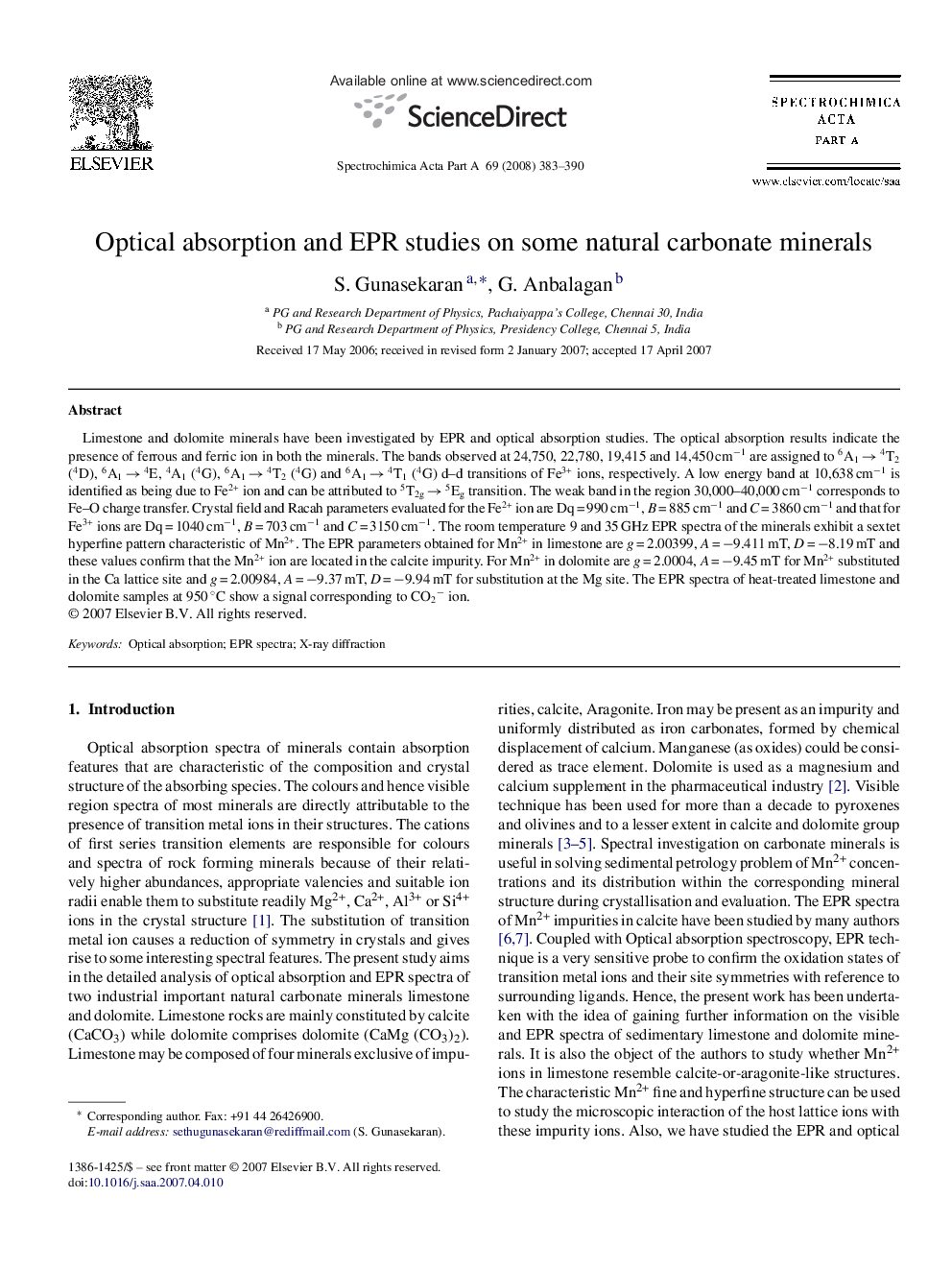| Article ID | Journal | Published Year | Pages | File Type |
|---|---|---|---|---|
| 1235298 | Spectrochimica Acta Part A: Molecular and Biomolecular Spectroscopy | 2008 | 8 Pages |
Limestone and dolomite minerals have been investigated by EPR and optical absorption studies. The optical absorption results indicate the presence of ferrous and ferric ion in both the minerals. The bands observed at 24,750, 22,780, 19,415 and 14,450 cm−1 are assigned to 6A1 → 4T2 (4D), 6A1 → 4E, 4A1 (4G), 6A1 → 4T2 (4G) and 6A1 → 4T1 (4G) d–d transitions of Fe3+ ions, respectively. A low energy band at 10,638 cm−1 is identified as being due to Fe2+ ion and can be attributed to 5T2g → 5Eg transition. The weak band in the region 30,000–40,000 cm−1 corresponds to Fe–O charge transfer. Crystal field and Racah parameters evaluated for the Fe2+ ion are Dq = 990 cm−1, B = 885 cm−1 and C = 3860 cm−1 and that for Fe3+ ions are Dq = 1040 cm−1, B = 703 cm−1 and C = 3150 cm−1. The room temperature 9 and 35 GHz EPR spectra of the minerals exhibit a sextet hyperfine pattern characteristic of Mn2+. The EPR parameters obtained for Mn2+ in limestone are g = 2.00399, A = −9.411 mT, D = −8.19 mT and these values confirm that the Mn2+ ion are located in the calcite impurity. For Mn2+ in dolomite are g = 2.0004, A = −9.45 mT for Mn2+ substituted in the Ca lattice site and g = 2.00984, A = −9.37 mT, D = −9.94 mT for substitution at the Mg site. The EPR spectra of heat-treated limestone and dolomite samples at 950 °C show a signal corresponding to CO2− ion.
